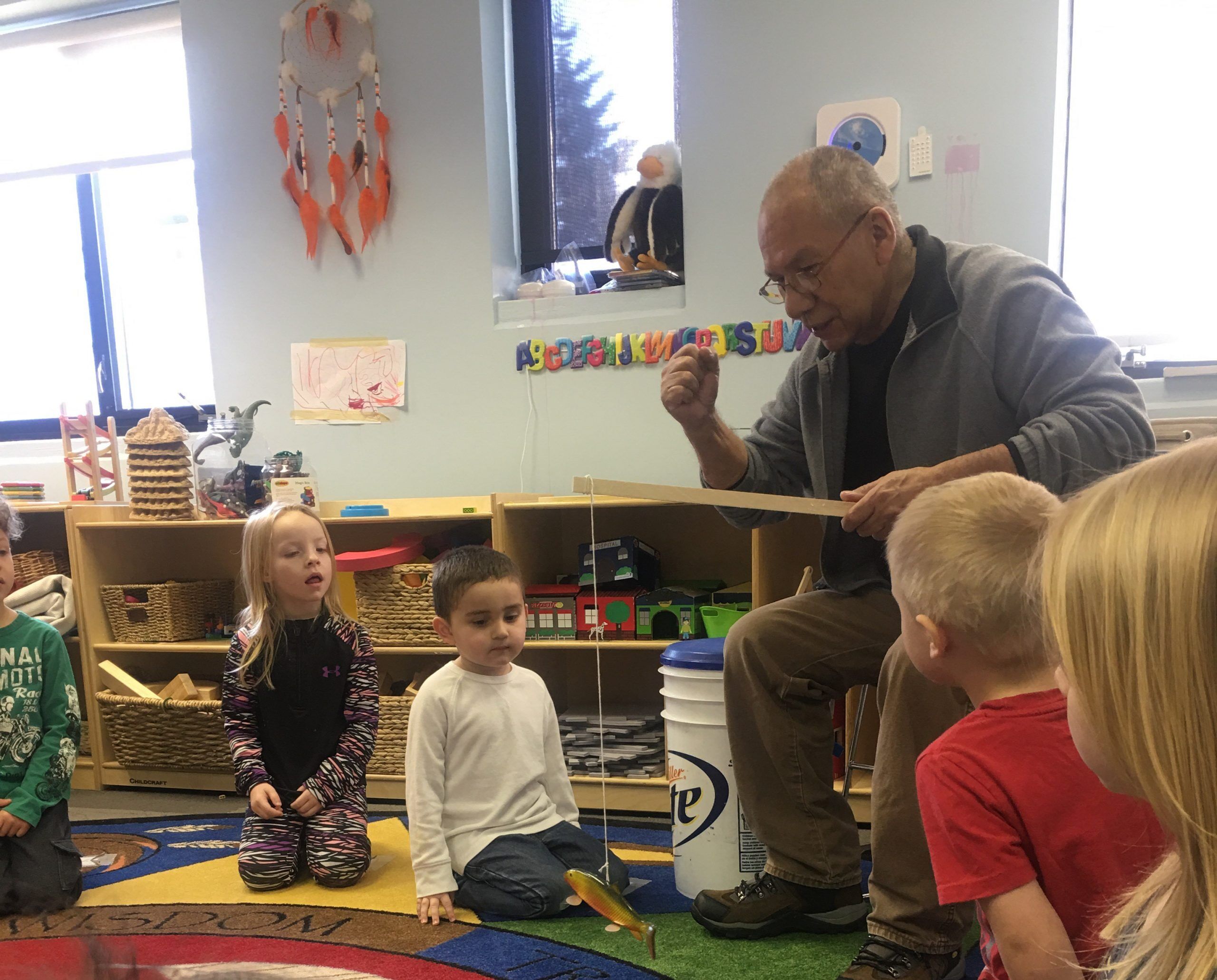I have always been interested in art and design since I was a young girl in high school. In fact, I dreamed of my career being in the realm of interior design. Initially, it did not feel like I ended up in that realm, but experience and my perspective has changed throughout the years.
My background was perfect for paving the way to my career. I am an early childhood educator! I design, create, and implement early learning spaces for children, educational programs for children and adults, and develop and implement mentoring programs for future and practicing teachers in the early childhood field.
As I matured and my experiences expanded in the early childhood field, I envisioned my work as a “heap” of clay that I could massage and shape using the needs, interests, guidelines, and standards for high quality.
KBOCC Restorative Teachings Cultural Consultant Mr. Dowd telling a story about spear fishing in the Little Eagles classroom.
In the last two years, with the Restorative Teachings Initiative, I have had a unique opportunity to immerse myself in the Anishinaabemowin (Ojibwe language) and culture. I am by no means an expert, or even close, but I have learned that language and culture are inseparable, and that they also play an important part in the design of education. Mr. Dowd, the elder and cultural consultant for our Restorative Teaching Initiative, shared his strong belief, “Without the language there is no culture.”
KBOCC Restorative Teachings Cultural Consultant Mr. Dowd sharing the Ojibwe language through drumming and song.
When Mr. Dowd tells stories and shares the Ojibwe language, they are tales of his childhood and adult memories of Ojibwe life as he lived it. His stories provide a mental image about how Ojibwe people live and think through his teachings. He has taught us about the beauty and the richness of the Ojibwe language and is aware of the variations between the tribes and locations.
Anton Treuer states in his book, Living Our Language: Ojibwe Tale and Oral History, that Ojibwe stories are vividly detailed, and often the speaker paints a verbal canvas of Ojibwe living: maple sugar camps, ricing, spearing fish, and religious ceremonies. The language tells the story, the details of the story create a visual image on the canvas. This is what Mr. Dowd does for us at Keweenaw Bay Ojibwa Community College (KBOCC). He provides us with the words, the stories, and the details to visualize a canvas full of the Ojibwe life. He is aware that each canvas in the mind of the teachers, parents, and children will be different. He reinforces a canvas filled with the stories and details from our own inner perspective. Our canvas is filled with drumming, a talking stick, regalia, eagle feather boxes, Nanaboozho (the trickster), the makwa, miigiizi, and more.
by Cheryl LaRose, Keweenaw Bay Ojibwa Community College, Restorative Teachings Initiatives Project Director

